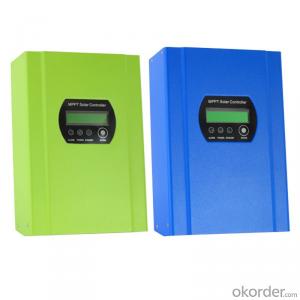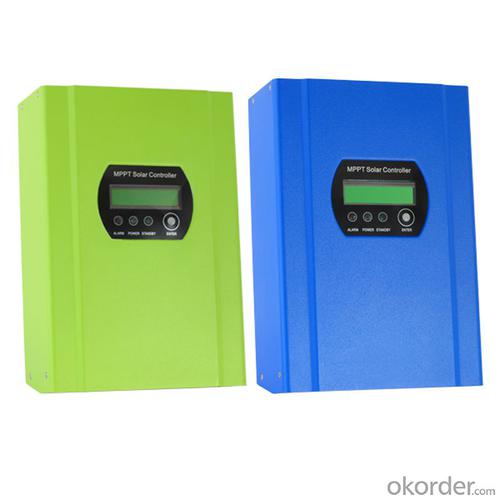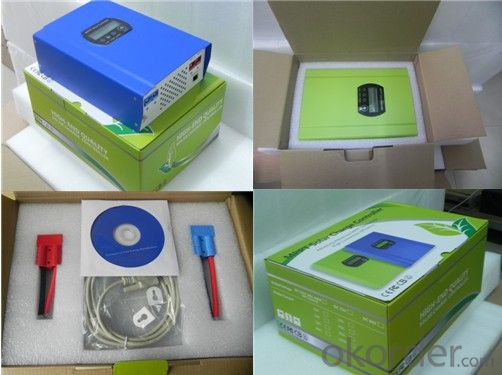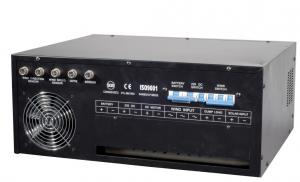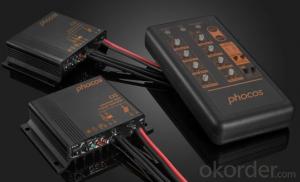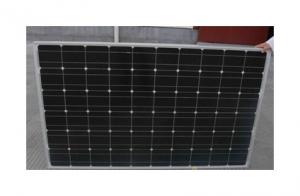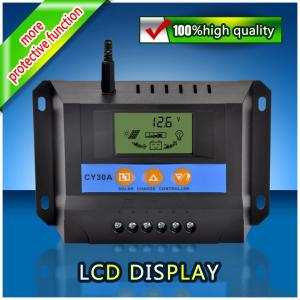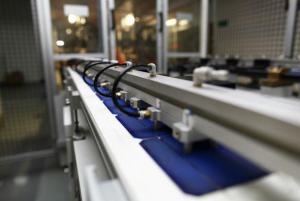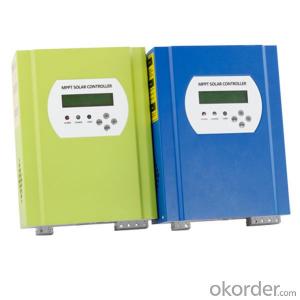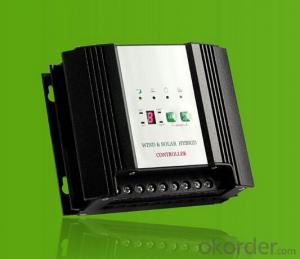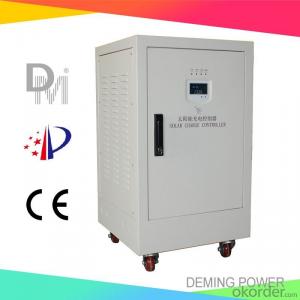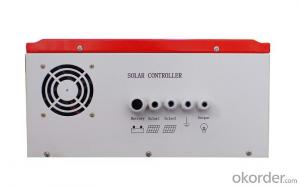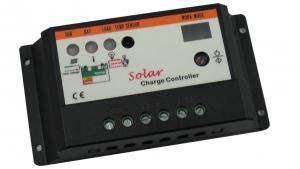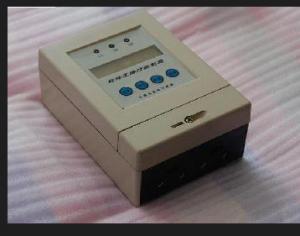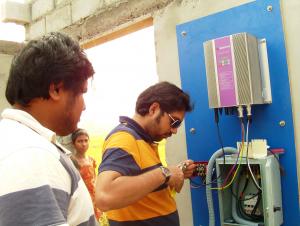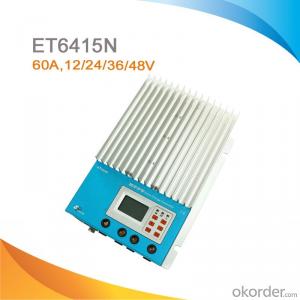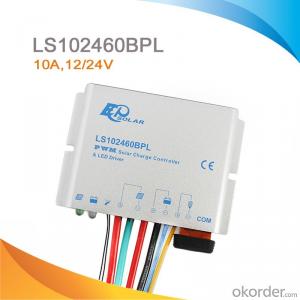German Solar Controllers Multifunctional 30A 96V Battery MPPT Solar Charge Controller 20A~30A
- Loading Port:
- China main port
- Payment Terms:
- TT OR LC
- Min Order Qty:
- 20 unit
- Supply Capability:
- 9999 unit/month
OKorder Service Pledge
OKorder Financial Service
You Might Also Like
96V Auto identification MPPT Solar Charge Regulator 30A with LCD and LED
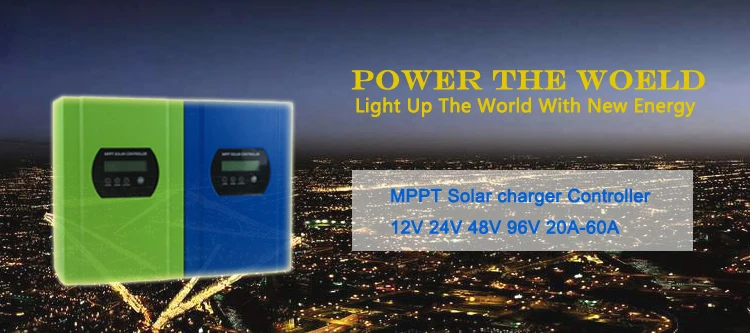
| Introduction |
This is a smart solar charge controller which has advanced MPPT technology .
Solar charge controller is one of the important parts in the off-grid solar system.
For having the advanced MPPT technology, the controller can trace the peak power with 99%
conversion efficiency. MPPT microprocessor, inside the controller,making 30% more charge
current with significantly less power than tradition. In addition to this, easier installing and supporting
to expand volume are other advantages. It can also store energy to different kinds of batteries.
We provide battery choice(Vented,Sealed,Gel,NiCd).
| Product Show |
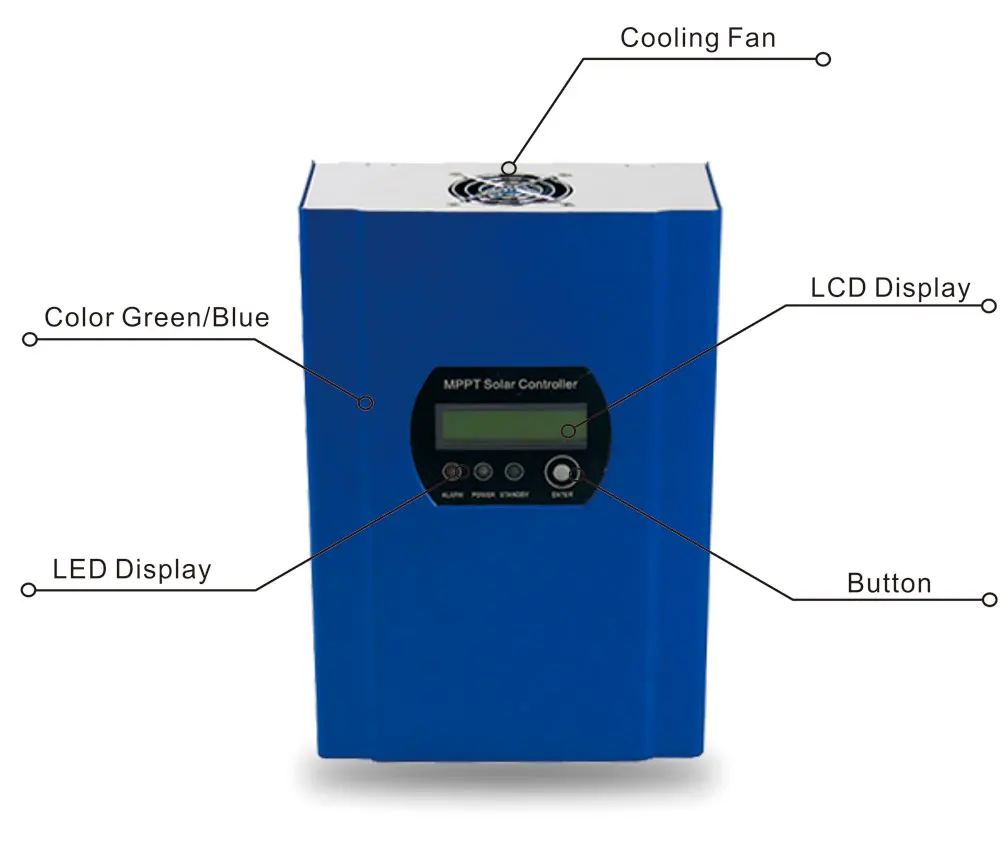
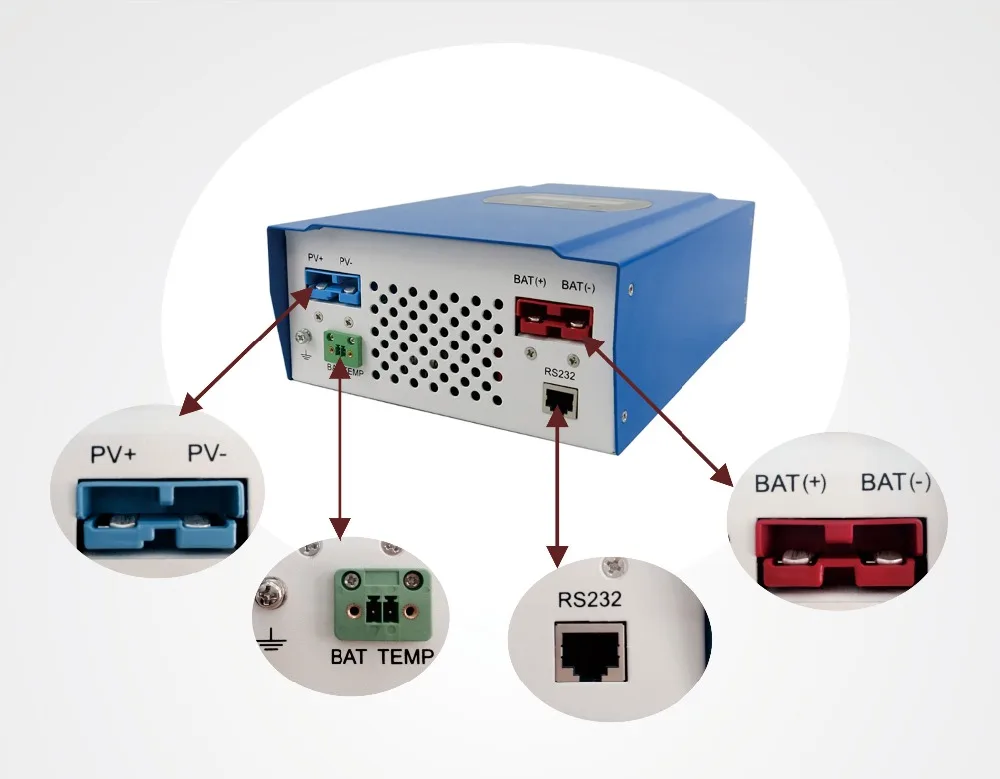
Please check the design brief,technical documents,product manual etc .
| Features |
1. Peak efficiency upto 99% with MPPT,increasing 30%~60% efficiency than traditional controller.
2. 12v/24v/48v system voltage automatic recognize.
3. Maximum input PV voltage upto DC150V.
4. 105degrees can be sufferred by good components.
5. Charge mode: three stages (fast charge, constant charge, floating charge)
6. Support kinds of batteries:Gel,Sealed lead acid,vented,NiCd,etc.
7. LCD and LEDs show parameters and system information,like PV input voltage,battery voltage,charge current,charge power,etc.
8. Port RS232 or connects to PC with upper software to show working state and parameters in 11 languages.
9. CE,RoHS certificatons approved.
10. 2 years warranty;3~10 years extended technical service.
| Application |
Off grid PV system show with our I-P-TPI Pure sine wave inverter:
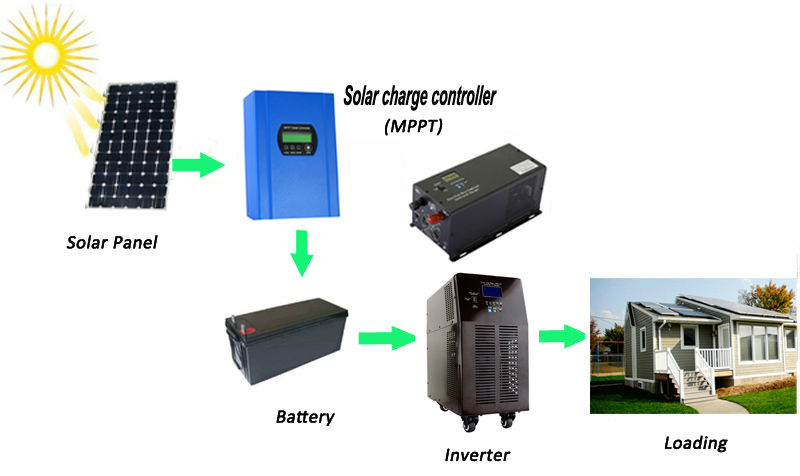
| Parameter |
Model: I-P-MSC-DC12V/24V/48V/96V-series | 20A | 30A | ||
Charge Mode | Maximum Power Point Tracking | |||
Method | 3 stages: fast charge(MPPT),constant voltage,floating charge | |||
System Type | DC12V/24V/48V/96V | Automatic recognition | ||
System Voltage | 12V system | DC9V~DC15V | ||
24V system | DC18V~DC30V | |||
48Vsystem | DC36V~DC60V | |||
96Vsystem | DC72V~DC120V | |||
Soft Start Time | 12V/24V/48V/96V | ≤10S | ||
Dynamic Response Recovery Time | 12V/24V/48V/96V | 500us | ||
Conversion Efficiency | 12V/24V/48V/96V | ≥96.5%,≤99% | ||
PV Modules Utilization Rate | 12V/24V/48V/96V | ≥99% | ||
Input Characteristics | ||||
MPPT Working Voltage and Range | 12V system | DC18V~DC150V | ||
24V system | DC34~DC150V | |||
48V system | DC65~DC150V | |||
96Vsystem | DC125~DC300V | |||
Low Voltage Input Protection Point | 12V system | DC16V | ||
24V system | DC30V | |||
48V system | DC60V | |||
96Vsystem | DC120V | |||
Low Voltage Input Recovery Point | 12V system | DC22V | ||
24V system | DC34V | |||
48V system | DC65V | |||
96Vsystem | DC125V | |||
Max DC Voltage | 12V/24V/48V system | DC160V | ||
96Vsystem | DC300V | |||
Input Overvoltage Protection Point | 12V/24V/48V system | DC150 | ||
96Vsystem | DC300V | |||
Input Overvoltage Recovery Point | 12V/24V/48V system | DC145V | ||
96Vsystem | DC295V | |||
Max. PV Power | 12V system | 280W | 450W | |
24V system | 560W | 850W | ||
48V system | 1120W | 1700W | ||
96Vsystem | 2240W | 3400W | ||
Output Characteristics | ||||
Selectable Battery Types (Default type is GEL battery) | 12V/24V/48V/96Vsystem | Sealed lead acid, vented, Gel, NiCd battery | ||
Constant Voltage | 12V/24V/48V/96Vsystem | Please check the charge voltage according to the battery type form. | ||
Floating Charge Voltage | 12V/24V/48V/96Vsystem | |||
Over Charge Protection Voltage | 12V system | 14.6V | ||
24V system | 29.2V | |||
48V system | 58.4V | |||
96V system | 116.8V | |||
Rated Output Current | 12V/24V/48V/96Vsystem | 20A | 30A | |
Current-limiting Protection | 12V/24V/48V/96Vsystem | 25A | 35A | |
Temperature Factor | 12V/24V/48V/96Vsystem | ±0.02%/℃ | ||
Temperature Compensation | 12V/24V/48V/96Vsystem | 14.2V-(The highest temperature-25℃)*0.3 | ||
Output Ripples(peak) | 12V/24V/48V/96Vsystem | 200mV | ||
Output Voltage Stability Precision | 12V/24V/48V/96Vsystem | ≤±1.5% | ||
The specification is only for reference. Subject to change without prior notice.
RS232 Function working stat |
The Figures of the PC Firmware and Testing Software:
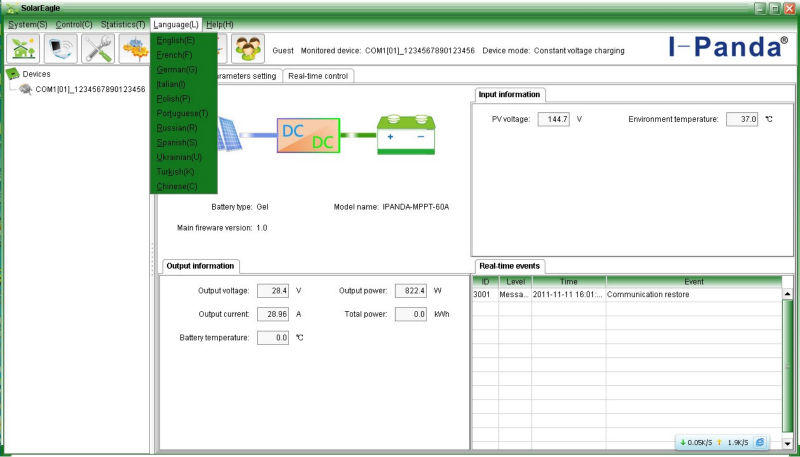
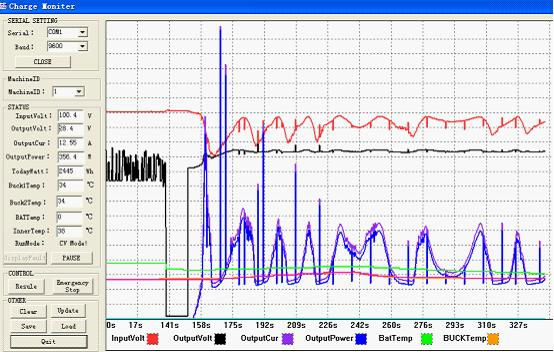
We provide OEM and ODM service.The 36V/72V/96V model also can be custom made for you.
Packaging |
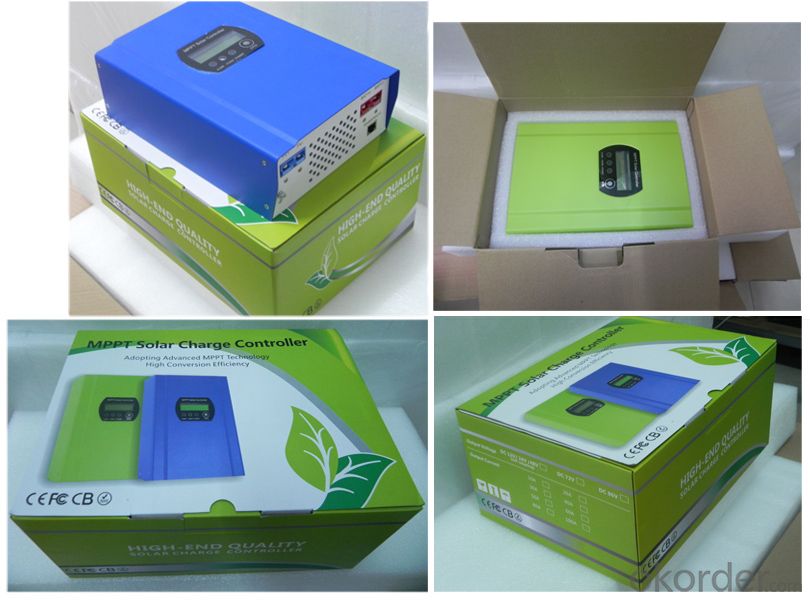
Certifications |
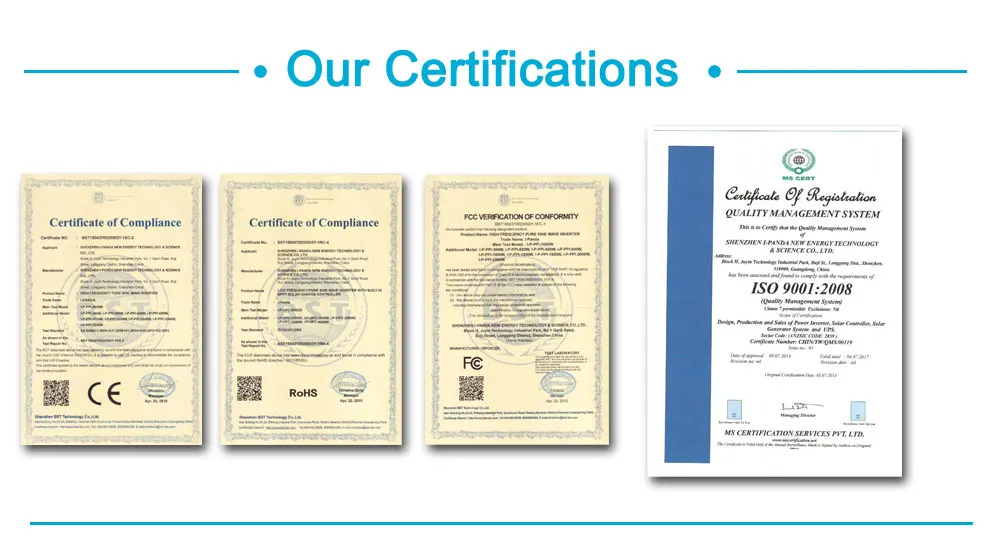
F&Q: |
Q1. How to ensure and monitor the products quality?
A1: We have established a perfect Quality Management System, In strict
accordance with ISO9001: 2008 quality system and ISO14001 environment system for quality assurance management;
Our ISO9001:2008 Quality System certificate encoding: CHIN/TW/QMS/00119;
Our ISO14001 Environment System certificate encoding: CHIN/TW/EMS/00028;
Q2. What is the warranty of products?
A2: The warranty period of different products are different; 5 years, 3 years, 2 years, 1 years; More details please refer to the product specification or manual; we will provide free life-long technical support ;
Q3. What is the difference between MPPT&PWM?
A3. MPPT charging mode, peak efficiency up to 99%, saving 30%~60% solar panel than traditional PWM controller.
- Q: How do I install a solar controller?
- To install a solar controller, first, ensure that you have the necessary tools and equipment. Start by locating a suitable spot near your solar panels to mount the controller. Next, disconnect the battery and solar panel connections from any power source. Connect the solar panel's positive and negative wires to the corresponding terminals on the controller. Then, connect the battery's positive and negative wires to the appropriate terminals on the controller. Finally, connect the load or inverter wires to the designated terminals on the controller if applicable. Once all connections are secure, reestablish power to the battery and solar panel.
- Q: Can a solar controller be used with a generator or other backup power sources?
- Utilizing a solar controller with a generator or alternative backup power sources enables the regulation of electricity flow from solar panels to the battery bank. This guarantees efficient battery charging and safeguards against overcharging or battery damage. The solar controller remains useful when employing a generator or other backup power sources, managing the electricity flow from solar panels to the battery bank. This seamless integration between solar and backup power sources optimizes battery charging and safeguards against potential damage. Incorporating a solar controller with a generator or alternative backup power sources enhances the overall efficiency and reliability of the energy system. The solar controller ensures effective battery charging, regardless of the power source utilized, and maximizes the utilization of renewable energy from solar panels.
- Q: Can a solar controller be used with a solar-powered outdoor advertising system?
- Yes, a solar controller can be used with a solar-powered outdoor advertising system. The solar controller helps regulate and optimize the charging of the batteries connected to the solar panels. It ensures that the batteries receive the correct voltage and current from the solar panels, allowing the outdoor advertising system to operate efficiently and reliably.
- Q: How do you determine the optimal charging voltage for your batteries using a solar controller?
- To determine the optimal charging voltage for batteries using a solar controller, it is crucial to refer to the manufacturer's specifications and recommendations for the specific battery type being used. Solar controllers usually have built-in settings or adjustable parameters that allow users to set the desired charging voltage. Additionally, monitoring the battery voltage and the charge controller's performance can help fine-tune the optimal charging voltage for maximizing the battery's lifespan and performance.
- Q: What is the role of a solar controller in preventing battery over-discharge?
- The role of a solar controller in preventing battery over-discharge is crucial in maintaining the health and longevity of the battery. A solar controller, also known as a charge controller, is an essential component in a solar power system. Its primary function is to regulate the charging process from the solar panels to the battery bank. However, it also plays a vital role in preventing battery over-discharge. When the solar panels generate electricity, the solar controller monitors the battery's state of charge (SOC) and prevents it from being excessively discharged. It does so by measuring the voltage level of the battery. Once the battery voltage reaches a specific threshold, indicating a low SOC, the solar controller automatically disconnects the load from the battery. This prevents any further discharge, protecting the battery from over-discharge, which can lead to permanent damage or reduced capacity. Additionally, many solar controllers have programmable settings that allow the user to set the voltage thresholds at which the load is disconnected and reconnected. This feature enables customization based on the specific battery type and user preferences. In summary, the role of a solar controller in preventing battery over-discharge is to monitor the battery's voltage level and disconnect the load when it reaches a predefined low threshold. By doing so, it safeguards the battery from excessive discharge, ensuring its longevity and optimal performance.
- Q: How does a solar controller prevent over-discharging of batteries?
- A solar controller prevents over-discharging of batteries by continuously monitoring the battery voltage and automatically disconnecting the solar panel from the battery when the voltage drops below a certain predetermined level. This prevents the battery from being drained excessively, which can lead to irreversible damage and reduced battery lifespan.
- Q: Can a solar controller be used with solar panel balcony mounts?
- Yes, a solar controller can be used with solar panel balcony mounts. The solar controller helps regulate and optimize the charging process of the solar panels, regardless of their mounting location. It ensures that the generated solar energy is efficiently stored in batteries or used to power appliances, providing a reliable and controlled power supply for your balcony-mounted solar panels.
- Q: What is the maximum power rating of a solar controller?
- The maximum power rating of a solar controller typically depends on its specific model and design. However, common solar controllers in the market today range from 10 to 60 amps, with power ratings ranging from 120-720 watts for 12V systems and 240-1440 watts for 24V systems. It's always important to check the specifications of a particular solar controller to determine its maximum power handling capability.
- Q: What is the maximum power consumption of a solar controller?
- The maximum power consumption of a solar controller typically depends on the specific model and its features. However, in general, the power consumption of a solar controller is relatively low, usually ranging from a few milliwatts to a few watts.
- Q: What is the maximum voltage a solar controller can handle?
- The maximum voltage a solar controller can handle typically depends on the specific model and manufacturer. However, most solar controllers are designed to handle voltages up to 150 volts.
Send your message to us
German Solar Controllers Multifunctional 30A 96V Battery MPPT Solar Charge Controller 20A~30A
- Loading Port:
- China main port
- Payment Terms:
- TT OR LC
- Min Order Qty:
- 20 unit
- Supply Capability:
- 9999 unit/month
OKorder Service Pledge
OKorder Financial Service
Similar products
Hot products
Hot Searches
Related keywords
